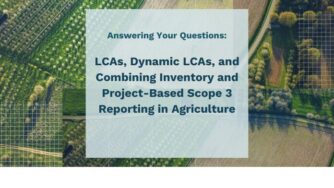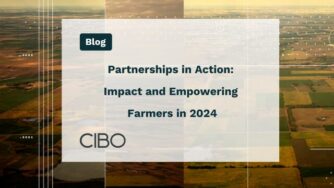Organizations, consumers and investors are increasingly scrutinizing sustainability programs and looking for companies to rise to the challenge of reducing their impact on the environment. To become more sustainable, companies should start by understanding their current situation and start monitoring carbon emissions.
Carbon emissions are responsible for 81% of overall GHG emissions, and businesses are responsible for a majority of the emissions. The rest of GHG emissions are: methane (10%), nitrous oxide (7%) and fluorinated gases (3%). Businesses must monitor and report their CO2 emissions, which is the key first step in reducing them. To do so, companies must classify their carbon footprint in three scopes.
The three scopes help companies to lay a firm foundation for carbon reduction strategies, with the associated financial savings. Companies can achieve sustainable reductions both within their operations and across global value chains, identifying key areas that generate the biggest GHGs.
Start exploring scope 1, scope 2, and scope 3 GHG emissions for your business.
Scope 1: Direct Greenhouse (GHG) Emissions
Scope 1 emissions are direct emissions from company-owned and controlled resources. In other words, emissions released into the atmosphere as a direct result of a set of activities at a firm level. This will include all the emissions from the activities of an organization or under their control, such as fuel burned in owned or controlled boilers, furnaces and vehicles, and emissions from chemical production in owned or controlled process equipment. All fuels that produce GHG emissions must be included in scope 1.
Scope 2: Indirect Greenhouse (GHG) Emissions from the Generation of Purchased Energy
Scope 2 emissions are indirect GHG emissions associated with the purchase of electricity, steam, heat, or cooling. Although the CO2e emissions result from an organisation’s activities, they occur at sources it doesn’t own or control. Scope 2 emissions physically occur at the facility where they are generated therefore they are accounted for in an organization’s GHG inventory because they are a result of the organization’s energy use. This covers indirect emissions from electricity purchased and used by a company. These emissions are created during energy production by the supplier.
Scope 3: All Indirect Emissions that Occur in the Value Chain
Scope 3 Emissions are from sources that the company does not own or control, covering areas associated with business travel, procurement, waste and water. They are those not included in scope 1 or scope 2 and extend the reach to account for GHG emissions through the entire value chain of the reporting company, including both upstream and downstream emissions.
- Upstream activities or cradle-to-gate emissions include all those that occur in the life cycle of a material/product up to the point of sale by the producer.
- Downstream activities are those emissions produced in the life cycle of a product after its sale by the producer, including distribution and storage, product use and end-of-life.
Scope 3 emissions regularly contribute the greatest share of a company’s carbon footprint but the measurement and reporting of them is seen as crucial to the sustained development of effective carbon reduction policies and helps companies identify GHG reduction opportunities, track performance, and engage suppliers at a corporate level.
Scope 3 Emissions Examples
- Purchased goods and services
- Business travel
- Employee commuting
- Waste disposal
- Use of sold products
- Transportation and distribution (up- and downstream)
- Investments
- Leased assets and franchises



